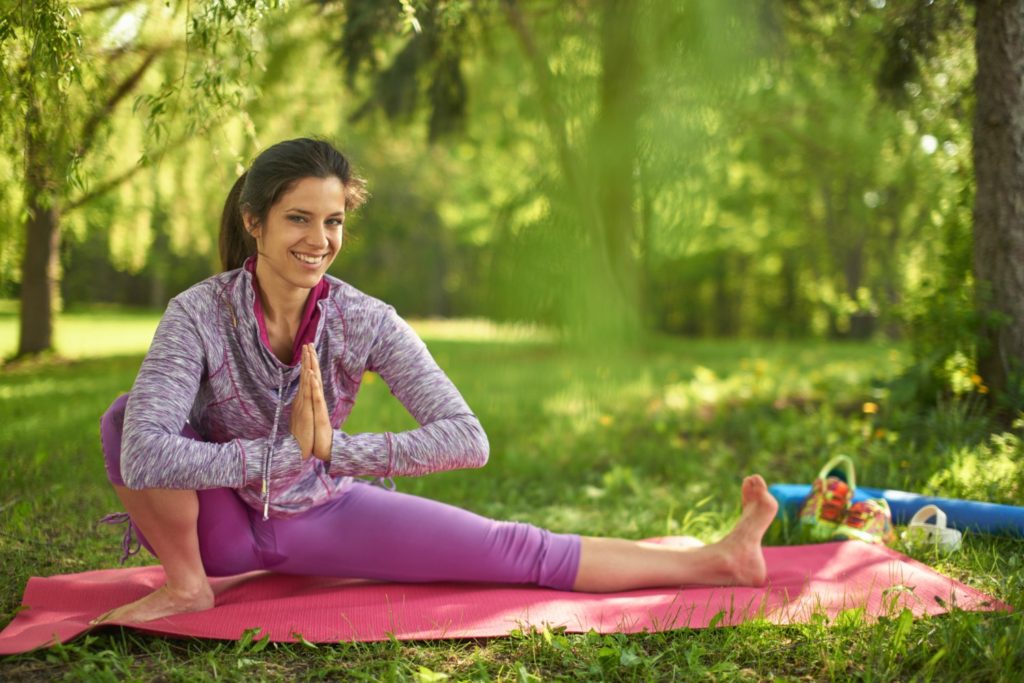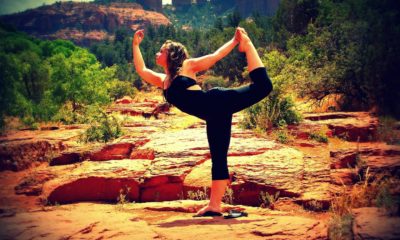Meditation
What are the origin benefits of meditation?
Nowadays, there are still many people who have not surrendered to the fantastic origin benefits of meditation of . These benefits are innumerable. However the most concrete and well-known are an emotional balance, mental balance, physical (illness), energetic inner peace, and a higher level of consciousness. There are still a lot of people who still wonder about the question “meditation, what is it? And what are its benefits?”.
In the first place, we will understand the origin of the word meditation, which derives from two words:
I meditate (think, to understand, to exercise the mind) and mederi (heal).
“Medha” His derivation in Sanskrit means wisdom.
Our outer world reveals the state in which our inner world is.
Meditation is a fantastic tool for inner peacemaking, for self-knowledge, for discovering new potentials, for connecting with a higher energy, for communicating with our spiritual guides, for receiving intuitions to respond to internal and life issues, for Development of tools for self-healing and healing to others, and above all to bring a universal / Divine energy for our Being and for our life.
Most of the time, people refuse to do meditation because the act of meditating means confronting what goes on inside the person. And for most human beings, the courage to look inward reveals the greatest bravery, and also reveals that the person is willing to take responsibility for what goes on inside, which will reflect positively on relationships, success, Self-valorization, and in all areas of life.
As we all know, our outer world is a reflection of our inner world, we all have the notion that no one can organize himself in his outer life without first organizing his inner life first. Most of us carry past negative internal baggage that conditions us, and it also limits our lives. Meditation (along with other tools such as Reiki, Reconnective healing, multidimensional healing, etc.) can help to free some of this inner “garbage” by helping to separate what is useful and throw away what does not serve to amplify, Expand and achieve a harmonious and fulfilling life.
Meditation is a fabulous tool for gaining access to our inner, threatening reality, built within us in childhood, using self-observation. This reality has created unconscious, completely limiting and self-sabotaging truths that make us believe that we have no value, that we do not deserve better lives and relationships, and that life is bad and that there are only bad people.
Baby steps for anyone who wants to start meditation
Meditation at an early stage is a practice which, through a proper and comfortable posture, where we will simply observe our inner world, emotions, mind, body and our energy (hot, cold, broad, For those who want to start meditating, it is not worth trying great techniques, or great spiritual flights, because it will only create frustration by not being able to even be with oneself. In a first phase meditation is only to cleanse our inner house, taking everything out, and then bring in only what serves us as a source of stability, balance, motivation, etc.
All the rubbish from our intern must be removed, and then an inner altar is created, a place where I feel safe and confident and where I like to be. Nobody can meditate, if he does not like the place where he is, then the organization and cleaning of the inner space is the first step for those who want to meditate.
And how do you do it… just watching what you feel, feeling the emotions, trying to identify, accepting, doing inner dialogue asking why you feel this, how can you change that? How would it be if everything was fine in my life? What can I do for myself to pacify myself? What gives me joy in my life? What can I do to free myself from what saddens me? What emotions take over me? What can I do to get rid of negativity? What in my life bothers me, and what can I do to change? etc. Each person must find his way and methods to be able to pacify, release and use his energy constructively in his life, instead of using it to criticize, demoralize, defeat, etc.
Identify the whirlwind and unravel the thread of inner chaos
So the initial meditation only serves to identify the inner whirlwind, and begin to unwind the messy inner ball, then decide what has to go to waste and what has to stay.
In this simple first step, one must surrender without fear to this whirlwind, let it flow and manifest itself in the most confused emotions, without judgment, without criticism, just observing what it is like, allowing oneself not to be well.
If we can first unravel the thread of internal chaos, slowly and slowly, awareness of our internal disorganization becomes more conscious, and so it will be possible, gradually and without pressure, to organize these fears, Agitation, anger, frustration, etc.
Directing the negative to consciousness and understanding, to then give way to other feelings that will help the person regain his inner balance, and thus be able to restructure his life abroad.
Thus, by resorting to a set of “techniques” of breathing, surrender, focus, and self-observation, it is possible to make a connection with our inner world, being able to perceive how we are internal, if agitated, panic-stricken, , And thus be possible to achieve a calm, and an internal pacification that allows to create stability and emotional, mental, physical and energetic balance.
In a second phase, an internal dialogue
First of all, in an initial phase, meditation serves to establish an internal dialogue, which allows us to take stock of the inner reality of the person, assuming that there are fears, rages, sorrows, frustrations, etc. By getting a real insight into how much we feel threatened by us, a process of integrating these inner beliefs begins, with a more peaceful reality that will bring significant benefits to the person in all areas of life.
Meditation at a later stage
The goal of meditation at a later stage is to focus and silence your mind, eventually reaching a higher level of inner awareness and peace.
One can meditate anywhere and at any time, allowing one to feel a sense of peace and tranquility no matter what is going on around them.
The person can more easily access the higher energy levels, which allows us to connect with our higher energies that can heal us and also be used to heal other people.
Meditation is nowadays clearly understood as a powerful energetic approach that anyone can enjoy to help themselves by helping to deal with emotional, psychological, health, stress and anxiety issues.
Meditation helps to release negative thought patterns and helps to “discipline” the mind, amplifying contemplation and reflection. Meditation can be considered a source of inner wisdom and healing.
Benefits of Meditation
Unfortunately, most people remain completely uninformed about the true meaning and power of meditation and are unaware of the powerful physical and mental benefits that meditation can have when practiced regularly. Meditation contributes to the release of negativity which helps the person to maintain a youthful and youthful appearance. Meditation can help improve mood and thus help cure depression through self-responsibility and self-observation.
Basic Principles of Meditation
It is important for the person to release the maximum of agitation to begin a process of meditation. For anyone who has never done meditation can start by taking some deep breaths, watching the breath. Also, rotate the neck and do some stretching, as well as massaging the body a little, helps the person bring their mind’s hectic attention to the body’s feel.
- Concentration in meditation is essential to calm the mind
- Focusing on the breath helps to restore energy levels, calm the mind and stabilize the emotions;
- Reassure and release the noises of thoughts and feelings.
- The purpose of meditation is simply to cultivate calm.
- Make conscious and release The “movies” that we create, daily, in our head.
- To become aware of emotional blocks, unconscious fears and create a safe place within us;
- Learning not to let the past contaminate our present and stop limiting our future;
- It helps us to truly perceive our emotions without analyzing, condemning or explaining them – noting, simply, how we are;
- The daily practice of this noticing makes us more aware of our feelings, thoughts, and actions, creating the opportunity to change our emotional responses and our mental patterns intentionally;
There are several types of Meditation
Meditation can be seen from different perspectives and philosophies of life, and there are very different types of meditation practices quite different and with different purposes. However, the different philosophies maintain the basic principles of meditation which are the reassurance of thought, reflection, relaxation, and contemplation.
The various types of meditation that are recognized include transcendental meditation, prayer, Zen meditation, Taoist meditation, meditation, and Buddhist meditation. Some methods of meditation may need the body to be motionless or to be moved with controlled deliberation, while other types allow for free movement of the body.
Now that we have a brief notion about “meditation, what it is and what its benefits” and how important its principles and benefits are to make our lives more balanced and peaceful, we can experience the benefits of meditation in practice. Mediation can only improve our lives by providing both physical and emotional benefits that will change our view of life in a positive way. Some people choose to take courses where they can learn how to meditate to feel more secure in learning meditation and relaxation techniques for beginners.

Simple Meditation Exercise for Beginners:
- Sit quietly and in a comfortable position.
- Focus on a word that brings you peace, a short phrase, sound, or prayer and repeats it a few times.
- Close your eyes.
- Relax your muscles from head to toe.
- Breathe slowly and naturally. At the same time, say your phrase, sound or word silently, to yourself.
- Be passive. Do not worry if you’re doing well. When another thought comes to mind, slowly return to your recurring theme.
- So concentrate for 5 minutes.
- Do not stand up straight away. Continue sitting and quiet for some time, allowing other thoughts to return. Only then open your eyes.










